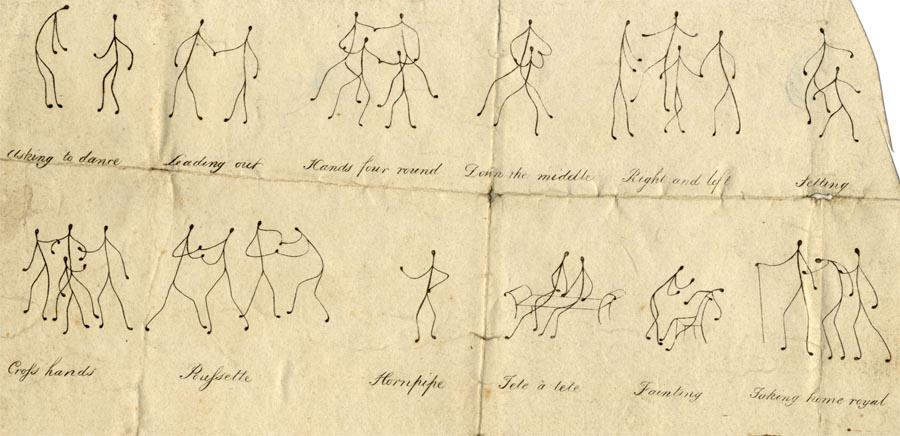The Vault is Slate’s new history blog. Like us on Facebook; follow us on Twitter @slatevault; find us on Tumblr. Find out more about what this space is all about here.’
This 1817 lithograph was a cheat sheet for young dancers, meant to remind them of the etiquette called for in various situations on and around the dance floor. The American Antiquarian Society, which holds this item, suggests that the folds in the paper might have resulted from the sheet being carried around in a dancer’s pocket for easy reference.
The spindly stick figures show the reader how to execute elements, or “figures,” of popular group “country dances.” These dances, which came to the States from England and France and changed from season to season according to the fashions of the time, were made up of a series of familiar “figures,” such as “right and left,” “down the middle,” and “hands four round.” (Today’s square-dancing is a descendent of these 19th-century forms.)
The sheet also illustrates how to stand when asking a partner for a dance, how to sit when engaged in a “tête-à-tête” between dances, and how to position oneself should the partner happen to faint. Because dances were some of the only occasions upper-class young men and women had to socialize, this advice may have been particularly welcome.
The final illustration humorously suggests the proper posture to use when escorting a drunken friend to his home.
Previously on The Vault: Dance cards from West Point, 1911-1917.

“Asking to Dance,” 1817. Courtesy of the American Antiquarian Society.